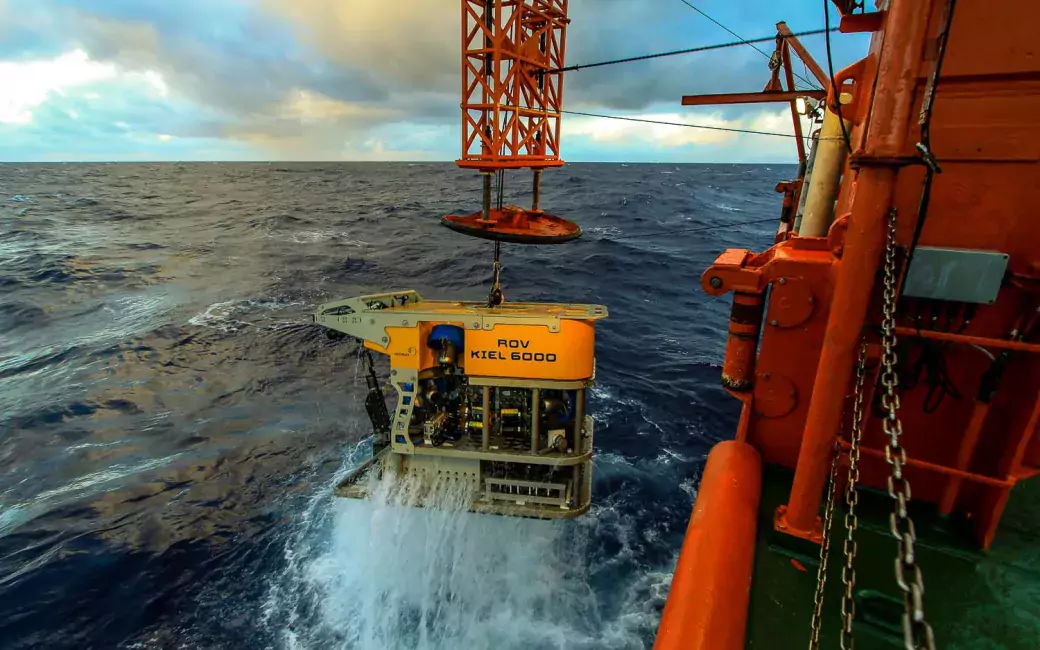Which geological processes control the location and size of copper and gold deposits?

An international team of geoscientific researchers will study the tectonic processes that are causing extraordinary copper and gold mineralisation in the Bismarck Archipelago, Papua New Guinea, this summer.
The controversy about Deep Sea Mining (DSM) is highlighted by the current negotiations at the International Seabed Authority (ISA) about the regulatory framework for potential future exploitation and the increasing number of countries that call for a precautionary pause on DSM activities. However, beyond the potential commercial activities there is great scientific interest in mineral systems at the seafloor because only here marine geologists can directly study the active tectonic, magmatic and hydrothermal processes that are relevant for the formation of many metal deposits preserved in the Earth's crust today. Their findings will be used to advance deposit models and to evaluate options for an improved recovery of energy-critical metals and metalloids from existing mine sites on land.
Expedition SO299 DYNAMET with the German research vessel FS SONNE will head to the Bismarck Archipelago in north-eastern Papua New Guinea to obtain the first comprehensive view of one of the world's most complex, yet extremely mineral-rich belts, and attempt to address a major unsolved question about the region: Why has so much metal been added to the crust at this location?
The 37-strong cruise with participants from Germany, Finland, Canada and Papua New Guinea is led by Dr. Philipp A. Brandl, marine geologist at GEOMAR Helmholtz Centre for Ocean Research Kiel, Germany, with Professor Christoph Beier from the University of Helsinki acting as co-chief. Participants also include researchers from the GeoZentrum Nordbayern of the FAU Erlangen-Nürnberg and the German Federal Institute for Geosciences, Natural Resources (Bundesanstalt für Geowissenschaften und Rohstoffe, BGR), University of Papua New Guinea and the Universities of Ottawa and Toronto in Canada through a collaborative research and training experience project in Marine Geodynamics and Georesources (iMAGE).
Sample collection using highly advanced submarine robotics
After a covid-related delay of two years, the cruise will finally continue research efforts that started during three previous SONNE expeditions in 1994 (SO94), 1998 (SO133) and 2002 (SO166) to the same overall region, however, with less advanced geological and geophysical techniques.
Only during SO299 state-of-the-art geophysical instruments will be deployed at the ocean floor to detect magma and fluid migration in the crust, trace active fault zones and model the thermal structure of the crust. In addition, the central sampling tool is the robotic submarine (ROV) KIEL 6000 from GEOMAR. The underwater robot is able to dive 6000 metres deep and is equipped with high-resolution cameras, sonar, and a variety of sampling tools and in-situ sensors and will provide, for the first time, a high resolution image from the seafloor. Operated by a group of eight engineers, the highly advanced non-destructive system allows targeted and visually controlled sampling of individual rocks as well as fluid and gas vent sites.
Metal deposits and hydrothermal vents
"The key aim of our research is to understand how plate tectonic processes may affect the formation of ore deposits near subduction zones. This region is of particular importance because some of the world's largest copper and gold deposits have formed there and are still forming today", explains Dr. Brandl. "We are interested in understanding how the tectonic processes influence the location and the size of mineral deposits.
The interaction of seawater with the hot surrounding of the volcanically active seafloor is interesting, because it transfers elements including metals from the rocks below to the seawater and vice versa." These regions are known as hydrothermal systems and are not only the site of active ore-forming processes but also hotspots of a highly-specialised biodiversity in the deep sea. "Our scientific responsibility thus includes to be least invasive in our research", adds Dr. Brandl.
Metals for green technologies
The demand in critical and specialty metals and metalloids is expected to continuously rise in response to the further development and increased use of green technologies.
"Meeting the conditions for this increasing demand and at the same time ensuring the raw materials are responsibly sourced, requires finding of the most suitable resources on land and increasing the efficiency in theirs use", says Christoph Beier. "For us researchers from Finland, studying ore-forming processes in geologically young terranes and in active systems is important. Many of the ancient deposits we have available to us in Finland, for example Outokumpu and Pyhäsalmi copper and gold deposits, may have formed in environments comparable to those found in the western Pacific and as such, the present may be the key to the past."






